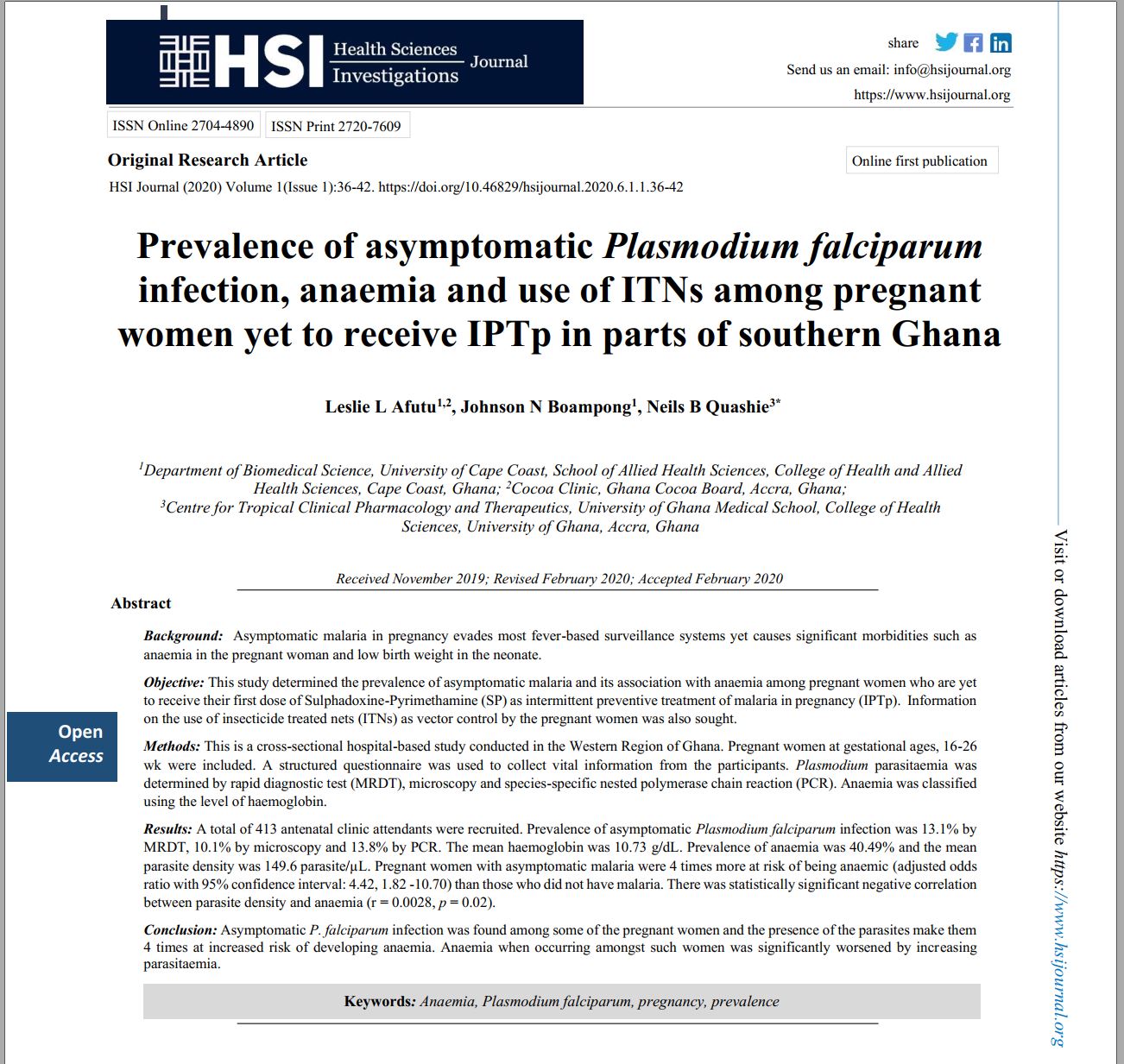Prevalence of asymptomatic Plasmodium falciparum infection, anaemia and use of ITNs among pregnant women yet to receive IPTp in parts of southern Ghana
Asymptomatic malaria and ITN use among pregnant women on IPTp-SP
Abstract
Background: Asymptomatic malaria in pregnancy evades most fever-based surveillance systems yet causes significant morbidities such as anaemia in the pregnant woman and low birth weight in the neonate.
Objective: This study determined the prevalence of asymptomatic malaria and its association with anaemia among pregnant women who are yet to receive their first dose of Sulphadoxine-Pyrimethamine (SP) as intermittent preventive treatment of malaria in pregnancy (IPTp). Information on the use of insecticide treated nets (ITNs) as vector control by the pregnant women was also sought.
Methods: This is a cross-sectional hospital-based study conducted in the Western Region of Ghana. Pregnant women at gestational ages, 16-26 wk were included. A structured questionnaire was used to collect vital information from the participants. Plasmodium parasitaemia was determined by rapid diagnostic test (MRDT), microscopy and species-specific nested polymerase chain reaction (PCR). Anaemia was classified using the level of haemoglobin.
Results: A total of 413 antenatal clinic attendants were recruited. Prevalence of asymptomatic Plasmodium falciparum infection was 13.1% by MRDT, 10.1% by microscopy and 13.8% by PCR. The mean haemoglobin was 10.73 g/dL. Prevalence of anaemia was 40.49% and the mean parasite density was 149.6 parasite/µL. Pregnant women with asymptomatic malaria were 4 times more at risk of being anaemic (adjusted odds ratio with 95% confidence interval: 4.42, 1.82 -10.70) than those who did not have malaria. There was statistically significant negative correlation between parasite density and anaemia (r = 0.0028, p = 0.02).
Conclusion: Asymptomatic P. falciparum infection was found among some of the pregnant women and the presence of the parasites make them 4 times at increased risk of developing anaemia. Anaemia when occurring amongst such women was significantly worsened by increasing parasitaemia.


